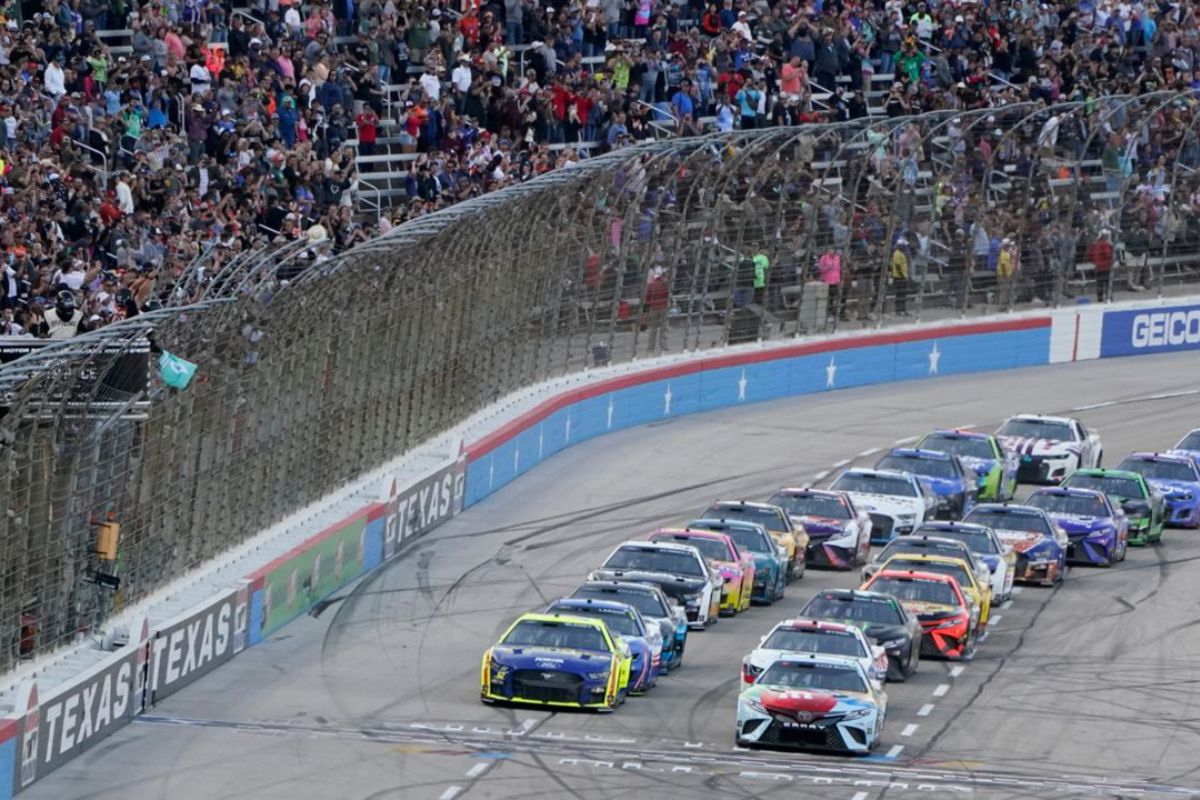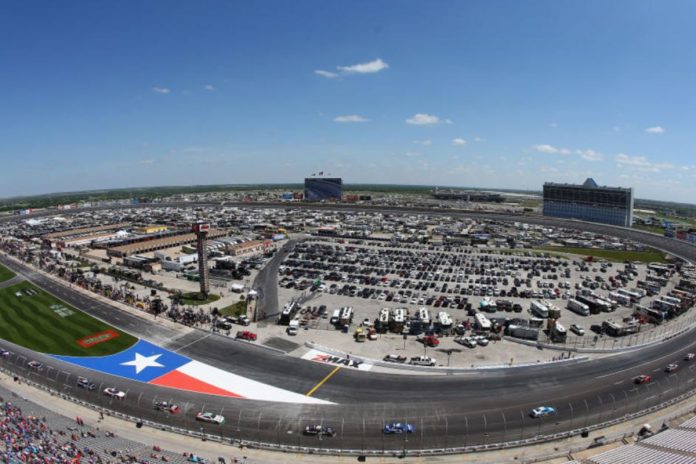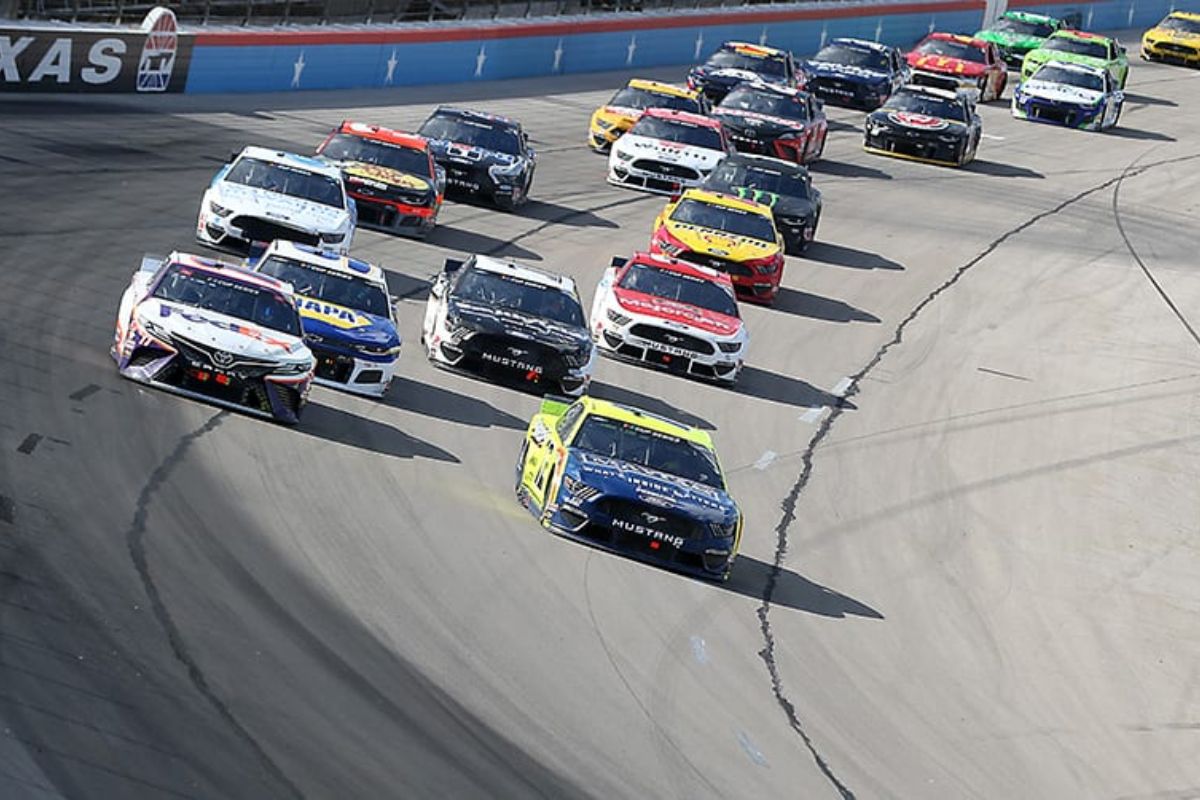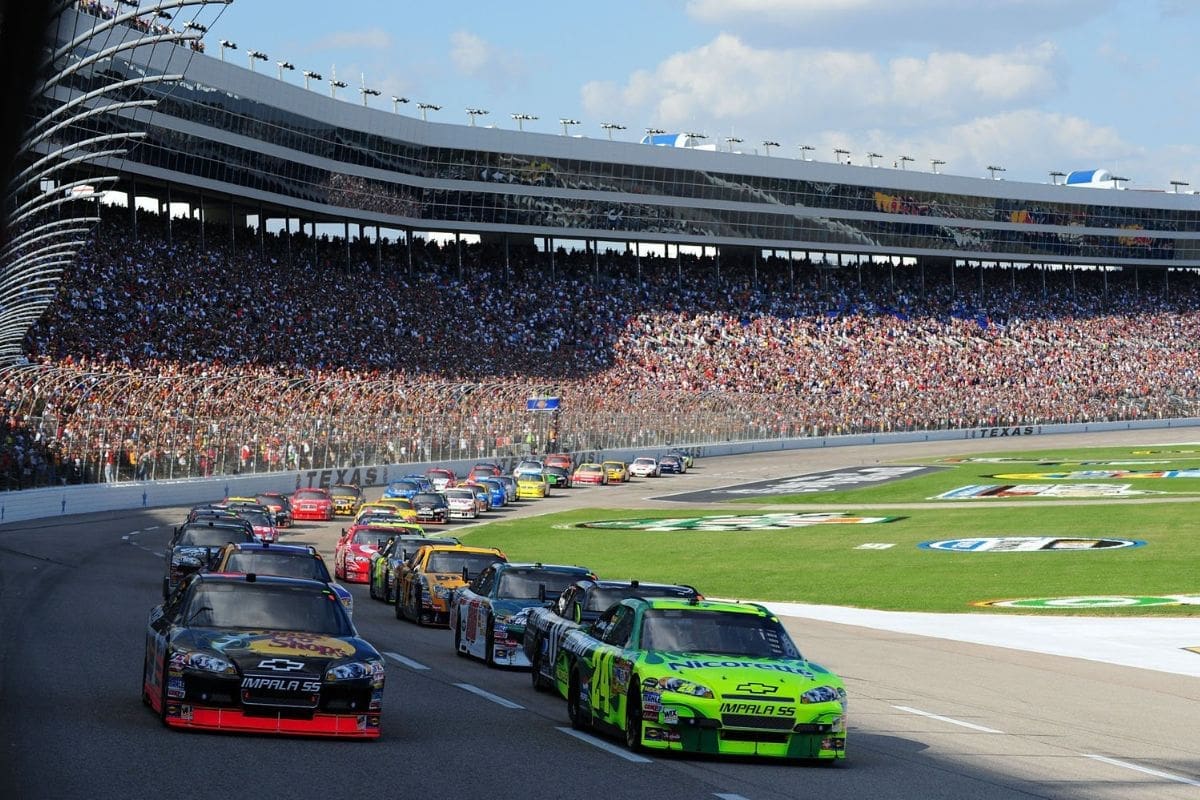Texas Motor Speedway’s Track Troubles: The saga of Texas Motor Speedway’s track troubles presents a complex web of challenges that intertwine the intricacies of track repaving, the changes in Texas’ climate, and the unpredictable nature of grip levels and tire wear. These factors have created a racing environment full of difficulties, from the notorious slickness of the PJ1 compound to the frustrating scarcity of passing opportunities. The question remains: Can these adjustments pave the way towards a more competitive and dynamic future for the speedway, or are we merely at the verge of understanding the depth of these track troubles?
Key Takeaways
- Repaving and reconfiguration have reduced grip, limiting racing lines and making the track more challenging.
- Temperature fluctuations and the Texas climate affect track grip, complicating car setups and strategies.
- Bumps and the application of PJ1 traction compound have increased risks of spins and accidents, especially in the top lane.
- Efforts to improve racing, like tire strategy adaptations and halting traction compound usage, show potential for a better racing experience.
- Continuous adaptation by teams and NASCAR indicates an ongoing search for the optimal balance between safety and competitive racing.
Texas Motor Speedway’s Continuing Challenges
Why has the Texas Motor Speedway, despite its 2017 repaving efforts, continued to present significant challenges for NASCAR drivers navigating its complex track conditions? The issue lies in the interplay between modern engineering solutions and the inherently unpredictable nature of motor racing. The 2017 repaving was aimed at addressing the track’s deteriorating surface quality, which had been a source of concern for drivers and teams. After a few complaints about the track being two slippery, a new traction compound PJ1 was added in 2019. For that year only, the track became quite enjoyable only to turn a nightmare later on.
Lastly, the interaction between new asphalt and the Texas climate plays a significant role. Temperature fluctuations can affect the asphalt’s texture and grip levels, creating a moving target for teams trying to dial in the most suitable setup for their vehicles. This dynamic environment demands constant vigilance and adaptability from drivers and their teams, who must predict and respond to changing conditions in real-time.

Track Conditions and Driver Struggles
Despite recent efforts to improve conditions at Texas Motor Speedway, drivers encountered notable challenges during the latest NASCAR race, particularly due to problematic bumps around turns 3 and 4 and the residual effects of the traction compound PJ1, which rendered the top lane perilously slick. The course’s texture, designed to enhance grip, instead became a treacherous zone, especially when handling the circuit’s higher velocities and intricate cornering dynamics.
The bumps, a seemingly minor issue to the untrained eye, compromised vehicle stability and control to a notable extent. Drivers, accustomed to the smooth asphalt of other circuits, found themselves wrestling with their cars, attempting to mitigate the sudden jolts and shifts in traction.
Moreover, the presence of the PJ1 compound, initially applied to improve racing quality by offering additional grip in the higher lanes, turned these areas into virtual no-go zones. The compound’s effectiveness appeared to diminish, leaving behind a slick, unreliable surface that contradicted its intended purpose.
History of Issues and Potential Solutions
The Texas Motor Speedway’s track issues are a reflection of the interplay between engineering decisions, driver safety, and the quest for competitive fairness, highlighting a history full of attempts to rectify persistent challenges through infrastructure changes and chemical solutions. This multifaceted problem traces back to before the notable 2017 repave, when the track was already notorious for its limited passing opportunities. In a bid to enhance competition and address these concerns, the reconfiguration of turns 1 and 2 was undertaken. Yet, this solution accidentally introduced a decrease in grip, emphasizing the unintended consequences of major structural interventions.
The adoption of traction compounds emerged as a chemical strategy to improve grip and, by extension, racing quality. However, this approach has not been without its complications, introducing unpredictability and inconsistency in track conditions. These issues highlight the delicate balance between modifying physical track features and resorting to chemical enhancements to achieve desired racing dynamics.
Hope for Improvement?
In light of recent developments, there appears to be a glimmer of hope for Texas Motor Speedway, as adjustments in race strategy and track management practices have begun to yield positive outcomes. The Speedway, long criticized for its track troubles, is witnessing a shift that could potentially alter its future path.
The NASCAR Cup Series race on Sunday came close to breaking the record for most cautions, with 15 caution periods. This continues a trend at the track, where a high number of cautions have become commonplace. In the last three races held at this venue, there have been a remarkable total of 43 cautions, averaging nearly 15 cautions per race.
15 cautions today…record is 16.
— Stephen Stumpf (@stephen_stumpf) April 14, 2024
Keep in mind that the 16 came in a 500-mile race; this one is 400 miles.#NASCAr #EchoParkAutomotive400
- Tire Strategy Evolution: Teams are now leveraging tire strategies more effectively, adapting to the track’s unique wear patterns to gain competitive advantages.
- Expanding Track Groove: The racing groove has widened, offering drivers multiple lines for overtaking, thereby enhancing the race’s competitive nature and spectator enjoyment.
- Halting Traction Compound Application: NASCAR’s decision to stop using traction compounds suggests a move towards natural track evolution, allowing drivers and teams to adapt based on skill rather than artificial enhancements.
- Strategic Race Management: There’s an increasing emphasis on strategic race management, from the drivers and the teams’ perspectives, indicating a more refined approach to tackling the track’s challenges.
News in Brief
Texas Motor Speedway’s enduring challenges with track conditions, including repaving, standardization, and climate-related issues, have greatly influenced driver performance and race dynamics.
The historical application of slick PJ1 compound and the track’s inherent bumps have worsened difficulties in maintaining grip and facilitating overtaking. However, recent adjustments, particularly the end of traction compound application, indicate potential for improving these issues.
Such measures, alongside strategic adaptations by racing teams, offer hope for a more competitive and engaging racing environment at the venue.
Our Reader’s Queries
Q. Why did Texas World Speedway shut down?
A. In a September 18, 2017 Jalopnik report, the closure of Texas World Speedway was officially confirmed. The sprawling 600-acre site had transformed into a solemn sight, serving as a repository for vehicles ravaged by the devastating aftermath of Hurricane Harvey. Copart had secured a lease for the entire facility, utilizing it as a storage hub for cars ruined by the storm’s fury.
Q. Is Texas Motor Speedway closing down?
A. While the land beneath Texas Motor Speedway could fetch a hefty sum, that doesn’t spell doom for the facility’s future. TMS stands firm, in its position. However, the real challenge lies in the abundance of seats dotting the venue. There’s simply an excess. This insight emerged in a piece first published on September 22, 2023, at 3:43 PM.
Q. Who is good at Texas Motor Speedway?
A. The racing scene at Texas has seen its fair share of fluctuations in recent seasons, with ups and downs in overall quality. Notably, William Byron clinched victory in last year’s race at the track. Fast forward to 2024, and Byron has emerged as the standout performer, boasting three wins in just eight races thus far. Impressively, Byron’s victories span across different track types, including superspeedways, road courses, and short tracks.
Q. Who owns Texas Speedway?
A. Under the ownership of Fort Worth’s sports authority, Texas Motor Speedway operates under a lease agreement with Speedway Motorsports, Inc. for racing activities. Leading the charge as the track’s general manager is Mark Faber. Conveniently accessible via Interstate 35W and Texas State Highway 114, the speedway stands as a focal point for motorsports enthusiasts.
ALSO READ: Texas Motor Speedway Weather Forecast: Ideal Racing Conditions Await!




